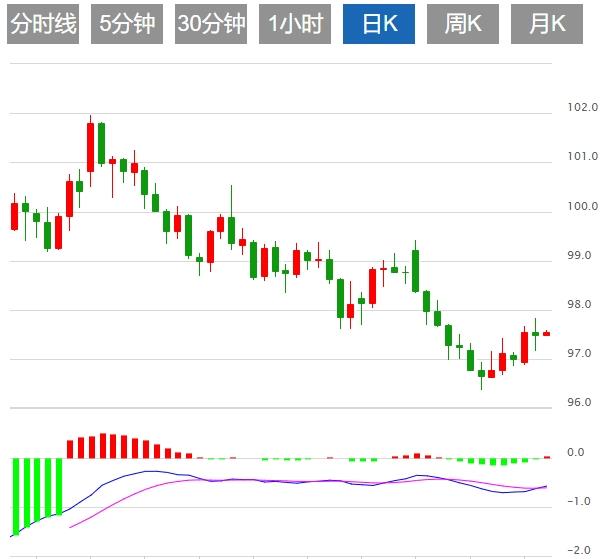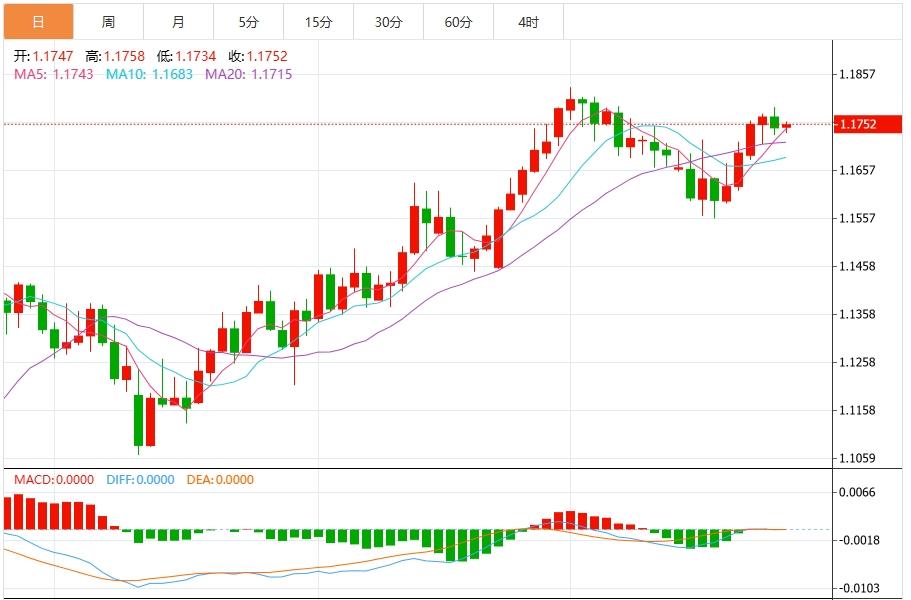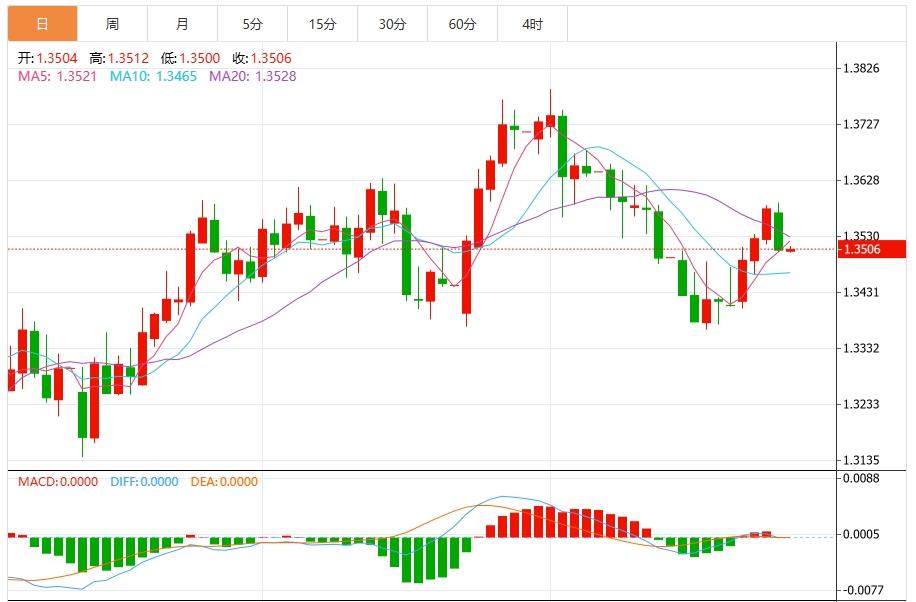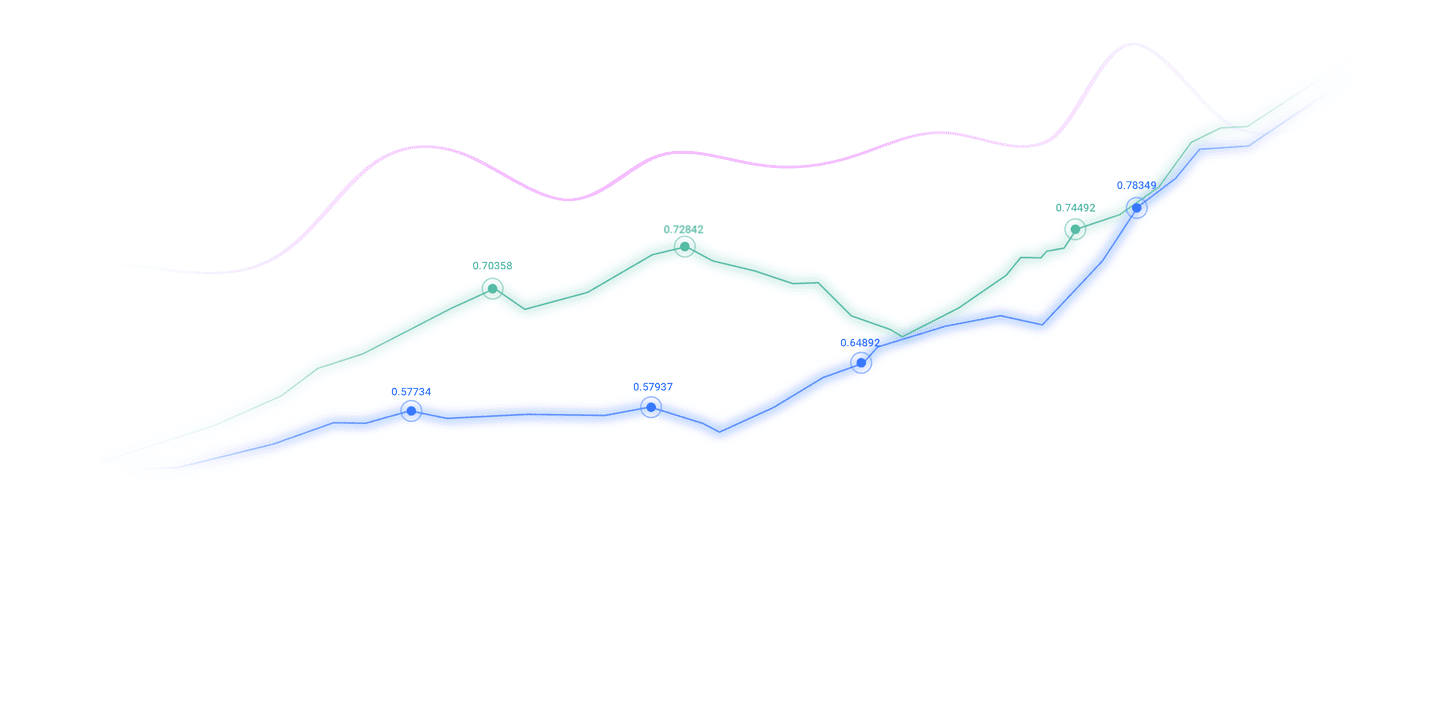Trusted by over 15 Million Traders
The Most Awarded Broker
for a Reason
CATEGORIES
News
- Trump threatens Fed Chairman Powell and may face "major lawsuits"
- The US dollar stabilizes above the 98 mark, and the news of miserable tariffs tr
- Gold is still bullish! 3351 is still the key!
- The dollar long positions are firm but are in fluctuation, technical warnings ab
- Empower investors with professional insights and lead the industry's smart upgra
market news
The US dollar index fluctuates downward, focusing on the interest rate resolution of the three major central banks
Wonderful Introduction:
If the sea loses the rolling waves, it will lose its majesty; if the desert loses the dancing of flying sand, it will lose its magnificence; if life loses its real journey, it will lose its meaning.
Hello everyone, today XM Foreign Exchange will bring you "[XM Foreign Exchange Official Website]: The US dollar index fluctuates and goes down, focusing on the interest rate resolutions of the three major central banks." Hope it will be helpful to you! The original content is as follows:
On the Asian session on Monday, the U.S. dollar index hovered around 97.56, and the U.S. dollar rose last Friday, supported by strong economic data, which suggests that the Federal Reserve may remain patient in resuming interest rate cuts. The progress in tariff negotiations has made the trade situation clearer and alleviated market uncertainty. Traders are wary of multiple risk factors that may arise in the www.xmserving.coming week, which will greatly affect the direction of global financial markets. This week, in addition to the adjustment of monetary policy and a series of important economic data releases, political factors, trade disputes and geopolitical situations may also become important drivers of market volatility.
Analysis of major currencies
Dollar: The dollar rose last Friday, supported by strong economic data, which suggests that the Fed may remain patient in resuming interest rate cuts, coupled with progress in tariff negotiations that have made the trade situation clearer and alleviated market uncertainty. Although the US dollar index showed a short-term technical rebound, the overall trend is still suppressed by political risks and cautious expectations of central bank policies. The Fed's upcoming www.xmserving.comments are crucial. If Powell suggests maintaining interest rates stability over the long term or suggests a rate cut under political pressure, the dollar may struggle to maintain its recent gains. Technically, although the U.S. dollar index is in a long-term downward trend, its small pivot that breaks through 97.664 has signaled a short-term momentum transition. Technical buyers are turning their attention to the 50-day moving average of 98.400, viewing it as the next resistance level. The level is expected to see initial selling pressure, but once a decisive breakthrough, the gains may extend to the July 17 high of 98.95. However, traders remain cautious because if they fall below 97.109, the bullish pattern will expire and the target support level is looking to 96.377.



1. Senior EU officials: The US-EU trade agreement is seriously imbalanced and harms European interests
On the 27th local time, after the United States and Europe announced the conclusion of a new trade agreement, Beinder Lange, Chairman of the International Trade www.xmserving.commission of the European Parliament, expressed strong dissatisfaction with the agreement, saying bluntly that it is neither satisfactory nor in line with the fundamental interests of Europe. Lange pointed out that this is a biased agreement. He believes that although the 15% unified tax rate brings to some extent the predictability of trade relations and legal security, the agreement, overall, is far from balanced and may even cause long-term harm to Europe. Lange said the European www.xmserving.commission made an additional $600 billion investment www.xmserving.commitment to the United States, as well as large-scale procurementPurchasing US military technology is not conducive to local employment and industrial development in Europe.
2. Trump's market is in decline. Japanese investors are on the verge of fighting against the central bank's resolution and financial report season.
The unexpected trade agreement between the United States and Japan triggered a violent market turmoil, pushing Japanese stocks to a record high and triggering a wave of Treasury bond selling, but investors are re-examining local risks after the carnival. "The agreement has brought great relief, but the market is now saying: Let's wait, don't be happy too early," said Vishnu Varathan, head of economics and strategy at Ruisui Bank. The focus will turn to key events in the www.xmserving.coming days, which may reveal the trend of Japanese stocks that have performed worse than regional peers this year. Although the Bank of Japan's policy meeting on Thursday is likely to keep interest rates unchanged, any clues that suggest a rate hike in September may impact the stock and bond markets. Investors are also keeping a close eye on the financial reports of www.xmserving.companies such as Fujitsu, Tokyo Electronics and Nissan. Although these data do not have time to reflect the impact of trade agreements, they can reveal the true resilience of www.xmserving.companies in a long-term high tariff environment - even if it is optimistic www.xmserving.compared to the worst situation.
3. Powell faces unprecedented pressure on the eve of the release of GDP and employment data.
In the context of intensifying political pressure, changing trade policies and economic signals, Federal Reserve Chairman Powell and his colleagues will enter the interest rate meeting next week. The resolution coincides with a rare data-intensive week—the U.S. government will release GDP, employment reports and Fed core inflation indicators one after another. Although the market generally expects the Fed to remain silent again, this series of data may reshape the policy path. Economists predict that the annualized growth rate of U.S. GDP in the second quarter, announced on Wednesday, is expected to reach 2.4% (a significant improvement from the first quarter's contraction of 0.5%, but this is mainly due to the sharp narrowing of the trade deficit. The July non-farm report released on Friday is expected to confirm that corporate recruitment is becoming more cautious. New jobs are expected to slow this month, with unemployment likely to rise slightly to 4.2% after a surge in employment in the education sector pushed up data in June. The U.S. government's personal income and expenditure report in June is expected to show that the core inflation indicators favored by the Federal Reserve have accelerated slightly month-on-month, indicating that tariffs are only gradually transferred to consumers.
4. ECB Executive www.xmserving.committee Member Chipolone: The economy is sending conflicting signals
ECB Executive www.xmserving.committee Member Chipolone said that the current economy is sending "contradictory signals", and decision makers need to wait for more data to become clear in order to form a new judgment on the necessity of further interest rate cuts. In an interview with Slovenia's Labour newspaper, Chipolone pointed out that weak consumer confidence threatens consumption expenditure, "and the continued uncertainty and the decline of the previous stimulus effect may inhibit corporate investment and exports." But he also emphasized that the labor market is resilient and that defense and infrastructure spending plans will gradually boost economic activities. “By September and later this year, we will get more information to correct macroeconomic forecasts,” he said, “we need to observe how trade disruptions affect euro zone prices – including shocks to supply chains, and the trade transfer effect that has led to increased euro zone imports from China.”
Institutional Views
1. Bank of America: Powell may offer an "olive branch" on interest rates
Bank of America analysts pointed out that the struggle between US President Trump and Fed Chairman Powell on interest rate cuts will become the focus of the Fed's interest rate meeting, but the market may usher in goodwill. Although Powell is expected to reaffirm the independence of the Federal Reserve and keep interest rates unchanged, he may also send a "retreatment signal" - if inflation meets expectations, it will open a policy window for interest rate cuts. Analysts warned that inflation panic caused by escalating trade wars may disrupt the pace of interest rate cuts, but as long as the economy continues to cool down, the Fed will still start an easing cycle.
2. Mitsubishi UF: Political instability and U.S. Treasury yields support the US dollar, and the yen is under pressure.
Mitsubishi UF's Derek Halpenny said in a report that the yen may find it difficult to rebound after the Japanese ruling coalition lost its majority in the Senate election, as domestic political uncertainty remains high. He pointed out that Japan may see leadership changes and may trigger general elections. In addition, the short-term yield of the United States will still support the US dollar. The U.S. initial data released on Thursday showed that despite a slightly weak labor market, the overall stability is consistent with Fed Chairman Powell's position against political pressure to cut interest rates.
The above content is all about "[XM Forex Official Website]: The US dollar index fluctuates and goes down, focusing on the interest rate resolution of the three major central banks". It is carefully www.xmserving.compiled and edited by the editor of XM Forex. I hope it will be helpful to your trading! Thanks for the support!
Life in the present, don’t waste your current life in missing the past or looking forward to the future.
Disclaimers: XM Group only provides execution services and access permissions for online trading platforms, and allows individuals to view and/or use the website or the content provided on the website, but has no intention of making any changes or extensions, nor will it change or extend its services and access permissions. All access and usage permissions will be subject to the following terms and conditions: (i) Terms and conditions; (ii) Risk warning; And (iii) a complete disclaimer. Please note that all information provided on the website is for general informational purposes only. In addition, the content of all XM online trading platforms does not constitute, and cannot be used for any unauthorized financial market trading invitations and/or invitations. Financial market transactions pose significant risks to your investment capital.
All materials published on online trading platforms are only intended for educational/informational purposes and do not include or should be considered for financial, investment tax, or trading related consulting and advice, or transaction price records, or any financial product or non invitation related trading offers or invitations.
All content provided by XM and third-party suppliers on this website, including opinions, news, research, analysis, prices, other information, and third-party website links, remains unchanged and is provided as general market commentary rather than investment advice. All materials published on online trading platforms are only for educational/informational purposes and do not include or should be considered as applicable to financial, investment tax, or trading related advice and recommendations, or transaction price records, or any financial product or non invitation related financial offers or invitations. Please ensure that you have read and fully understood the information on XM's non independent investment research tips and risk warnings. For more details, please click here


































































































